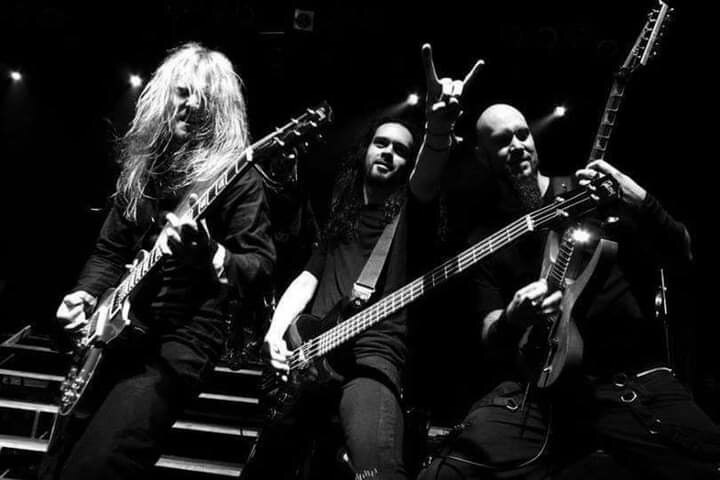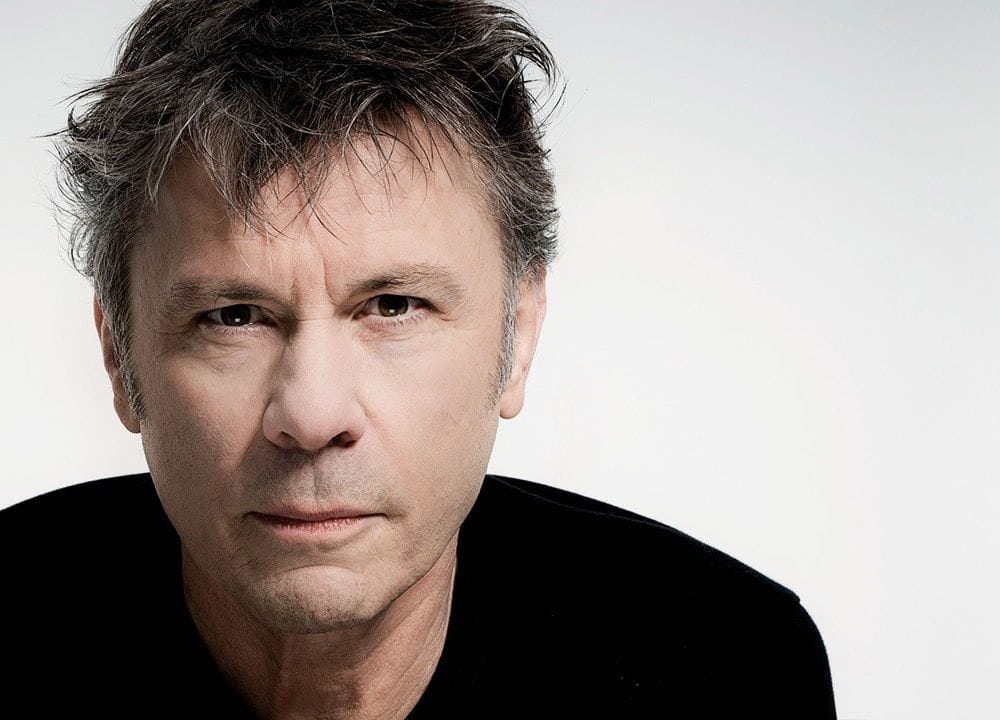This past May 24th, a quiet 20th anniversary passed for Therion’s twin 2004 albums Sirius B and Lemuria, with only the band themselves acknowledging the event via one of bandleader Christofer Johnsson’s retrospective Facebook posts he’s been fond of writing lately. It is predominantly the view of the metal community at large that Theli is the band’s widely accepted masterpiece, and rightfully so, that album being a genre defining landmark of symphonic metal and still one of the most vital metal albums of the 90s. Yet within the communities of Therion fans I’ve dabbled with, there is an almost pervasive belief that the band struck upon a pair of unheralded masterpieces with these twin albums. I have long held this belief myself, actually since first getting my hands on a pre-ordered double disc edition from Nuclear Blast all those many years ago. It was the first new Therion release I was anticipating, having only became a fan of the band shortly after the release of Secret of the Runes back in 2001, and to say that it lived up to the hype is an extreme understatement. I knew from press tidbits ahead of the release date that the scale of production on these two albums was massive, 170 musicians involved, including The City Of Prague Philharmonic Orchestra, and an arsenal of folk instruments, most alien to the traditional format of heavy metal. But there’s a huge gulf between press release ambitions and the actual artistic execution thereof, and I wasn’t prepared for just how magnificent the latter could truly be.

The presence of a large orchestra was indeed a new thing for Therion, having only utilized small orchestras or ensembles on their prior four symphonic metal albums. If the goal in utilizing the Prague Philharmonic was to sound massive, Therion succeeded in spades, with the orchestra adding a lushness, depth and textural grandeur to the albums that they had never achieved before. Rounding out the symphonic sound were the expected hosts of professional classical vocalists and choirs, a Therion staple since Theli, but the band also chose to reintroduce the concept of actual lead vocalists once again. The most notable of whom was Christofer Johnsson himself, delivering lead vocals for the first time since his fierce barking on Theli, but really hearkening back to his guttural death growls on Symphony Masses. Also returning for guest appearances on select tracks was Piotr Wawrzeniuk, former Therion drummer and vocalist whose distinctive clean vocals graced those iconic Theli songs. But a fresh face entered the Therion world around this time in former Yngwie Malmsteen and then current At Vance vocalist Mats Levén. To say Levén would become an integral part of the Therion sound and line-up is an understatement, he became their touring vocalist for the supporting tour, and was a key component to the excellent follow up Gothic Kabbalah where he in many ways became the face of the band alongside fellow lead vocalists Snowy Shaw and Katarina Lilja. The vocal variety on these two albums are part of their success, creating a diverse listening experience that was fresh and unpredictable, a break from the past few albums relying mostly on lead choral vocals alone.

I underestimated just how difficult it would be to put into words why I believe these albums are genuine, Theli-level masterpieces and capstones of the symphonic metal genre. I could tell you that they sound epic… but that adjective gets thrown around so much by all of us in regards to metal, particularly of this vein, that it’s almost lost all meaning in the grand scheme of things. When I was listening to the albums repeatedly over these past few weeks, I tried to recall my memories of what it felt like when I first listened to them twenty years ago. One of those memories that tended to be top of mind was that I’d sit and listen to them on headphones while staring at their breathtaking cover artwork, courtesy of the great Thomas Ewerhard. The music on the albums sounded like it was telling the story of these bleak yet beautiful mythical landscapes depicted on both covers, or in some fantastical way, was recorded music that was obtained from those places. The flood plain stretching before skeletons of skyscrapers on the Lemuria artwork always struck me as evoking a sense of mystery, loss, and sorrow — while the hot, scorched earth desert plateaus of the Sirius B artwork brought to mind a feeling of eternity, elegiac and wondrous at once. That gigantic planet framing the bleak, blood red sky in the horizon with a menacing, eye of Sauron type of image in the center only added to the sense of the mystical and forbidden.

The music on both albums matched the imagination of their artwork, pushing aside any notions of aiming to be hooky and catchy (although those qualities exist in subtler, untraditional ways) and instead pulsing with an emotional ripple of the heady rush of indefinable spirituality. These tracks felt more like movements in a grander, overarching piece of music as opposed to just being regular songs, at times reminiscent of the pacing of a film score. One of the admittedly stranger references I keep coming back to is that sometimes the music here reminds me of the way the German group Enigma’s music was put together, with an ear towards unconventional structures and disparate elements that somehow gelled beautifully. Therion had been working with unique song structures for awhile by this point, with plenty of fine examples on their prior four albums. Yet here they seemed to let their artistic ambitions run free, veering wildly from one sequence to something else entirely, such as the way “Dark Venus Persephone” opts for an orchestral swell during the mid-song bridge instead of a traditional guitar solo, horns and woodwinds combining for a transcendent moment. Or the opening minute of “The Khlysti Evangelist”, where vinyl pops and crackles accompany what appears to be a lost recording of an opera, lulling us into a false sense of security before a battery of snare drums and Accept-ian riffage shakes us out of our reverie. The entirety of “An Arrow From the Sun” is a lucid example of this overarching tendency, from beautiful lead guitar figures erupting out of nowhere during the refrain to usher in a heavenly blanket of choirs, to a group of mandolins gracefully floating in towards the end without warning.
One of the things I’ve always loved about Therion is their tendency to utilize purely instrumental musical motifs as the “chorus” or refrain in lieu of the standard way of building one out of a vocal melody. It always made them feel more organically symphonic than any other artists tagged as symphonic metal, and lent their music an original identity that separated them from their peers. That tendency is on hyperdrive throughout both Sirius B and Lemuria, but a wonderful example of the band taking a more traditional vocal melody forward approach is on the title track “Lemuria”, a gorgeous, acoustic guitar meets swelling strings lament. Here Wawrzeniuk shines on lead vocals, delivering perhaps his most iconic moment during his time with Therion, his distinctly accented singing voice taking command during the chorus, sounding strangely alien in this lush context, yet somehow fitting perfectly. The lead guitar that echoes his vocal melody is pitch perfect in tone, and a vivid example of just how fluid Kristian Niemann is as a lead player, his work throughout these albums is jaw dropping. He contributed to songwriting on “Feuer Overtüre / Prometheus entfesselt”, and I love how he and Johnsson live for these unpredictable and exciting placements of lead guitar explosions, defying convention and listener expectations (you can normally tell when a solo is coming in standard metal tunes, not the case at all here). When I hear his signature tones on the fantastic Sorcerer albums he’s been on since leaving Therion, I’m reminded of all these incredible moments he laid down with Therion on albums such as these (he’s seriously one of my favorite guitarists of all time).

I mentioned a sense of the spiritual earlier, and I get those feelings when I listen to tracks such as the cinematic “Call of Dagon”, with its call-and-response horns and woodwinds musical figure that serves as the wordless refrain over rumbling bass and dirty riffing. I feel it during “Three Ships of Berik, Pt 1/ Pt 2”, a truly grandiose, perfect fusion of orchestra and metal where Johnsson’s death growls are contrasted by joyfully power metal-ian lead guitar figures and a regal, triumphant orchestral counterpoint. The glorious, dramatic, sturm und drang ending is so unexpected and spirit lifting that it still catches me off guard all these thousands of listens later. I would be remiss not to mention “The Wondrous World of Punt” in this context, because its perhaps my favorite moment on both albums, a piece of music that explored territory that recalled prior classics such as “Eternal Return” and “Clavicula Nox”, yet expanded on those ideas in broad, sweeping brushstrokes. It does indeed have the quality of an oil painting, intricately textured and detailed. I’m hard pressed to explain why this piece of music hits me so hard… there’s something tranquil in the vastness of it’s plaintive acoustic guitars, patient piano patterns, and mournful organ melodies. The distant sounding choir vocal arrangements, particularly in the middle passage, glide gracefully through the ambient space, and the combined effect is something I find so profoundly spiritual and meditative that I’m always emotionally affected when listening to this piece of music. That it ends so unexpectedly bright and upbeat is fitting for Therion, particularly the addition of a Greek sounding melody on mandolin towards the end as a why the hell not accent, a charming bit of levity to punctuate the band’s most breathtaking moment.
I could keep citing my favorite moments, but these are simply albums that have to be experienced if you haven’t by now, or revisited if you had in the past but didn’t vibe with them for whatever reason. Therion would go on to continue making great music (the first in the Leviathan trilogy was my 2021 album of the year), and they’ve even attempted projects that would rival the scope and ambition of this twin album recording project (three albums if you consider that leftover material was used for 2010’s Sitra Ahra). But here Christofer and the Niemann brothers reached for the stars and actually touched them, creating a pair of albums that truly transcended symphonic metal as we know it and redefined what was possible within it’s framework. Their uniquely combined talents, Johnsson’s inexplicable ability to articulate his musical vision into reality and the Niemann brothers ability to help steer that vision here (also shoutout to the underrated and awesome Richard Evensand behind the kit) are what gave them such a strong musical identity throughout this era of the band from Deggial through Gothic Kabbalah, and though I love the new lineup for what they’ve brought to the table, I can’t help but have a soft spot for this particular Therion lineup. I’m happy to have finally written something about these particular albums, even if it sounds like the ramblings of a fanboy. These albums have been so important to me for so long, and this anniversary felt like a good time to remind myself of their magnificence, and others of their existence.















